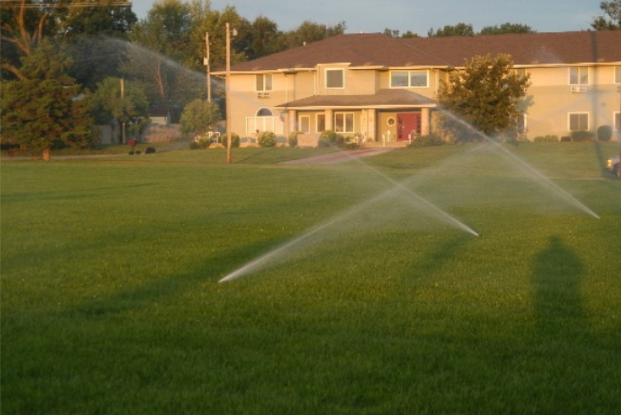It may be cold now, but cool-season grasses need attention soon
MANHATTAN, Kan. – With much of the Midwest locked in a cold spell, it may be hard to believe that Kansans are less than a month away from starting the year’s lawn care.
But Kansas State University horticulture expert Ward Upham is sending notice that cool-season grasses will need some attention beginning in March.
Kentucky bluegrass and tall fescue are the most common cool-season grasses in Kansas. Through the end of the year, Upham said the following calendar will give homeowners a good plan for maintaining these varieties:
• March – Spot treat broadleaf weeds, if necessary. Treat on a day that is 50 degrees Fahrenheit or warm. Spot treating will be less effective if it rains within 24 hours after application.
• April – Apply crabgrass preventer when redbud trees are in full bloom. The preventer needs to be watered in before it will start to work. One-quarter inch of water should be enough for most products.
• May – Fertilize with slow-release fertilizer if you water your lawn, or if you normally receive enough rainfall that your turf doesn’t go drought-dormant during the summer. If there are broadleaf weeds, spot treat with a spray, or use a fertilizer that includes weed killer. The fertilizer needs to be watered in; the weed killer’s effectiveness will be reduced if you get rain within 24 hours after application.
Also in May, if grubs have been a problem, apply a product containing imidacloprid or chlorantraniliprole. Irrigate with ¼ inch of water if it doesn’t rain within 24 hours of treatment.
• June through mid-July – Apply a second round of crabgrass preventer by June 15, unless you have used Dimension (dithiopyr) or Barricade (prodiamine) for the April application. These two products normally provide season-long control with a single application. Remember to water in the product after applying.
• Late July through August – If you see grub damage, apply a grub killer that contain Dylox. Imidacloprid and chlorantraniliprole are effective against young grubs but may not be effective on late instar grubs. The grub killer containing Dylox must be watered in within 24 hours.
• September – Fertilize the lawn around Labor Day. This is the most important fertilization of the year. Water in the fertilizer if rainfall doesn’t occur within 24 hours.
• November – Fertilize again. This application is taken up by the roots but is not used until the following spring. Water in the fertilizer. Spray for broadleaf weeds even if they are small. Broadleaf weeds are much easier to control in the fall than in the spring. Try to spray on a day that is at least 50 degrees F. Use label rates for all products.
Upham and his colleagues in K-State’s Department of Horticulture and Natural Resources produce a weekly Horticulture Newsletter with tips for maintaining home landscapes. The newsletter is available to view online or can be delivered by email each week.
Interested persons can also send their garden- and yard-related questions to Upham at [email protected], or contact your local K-State Research and Extension office.
FOR PRINT PUBLICATIONS: Links used in this story
K-State Horticulture Newsletter, https://hnr.k-state.edu/extension/info-center/newsletters/index.html
K-State Research and Extension local offices, www.ksre.k-state.edu/about/stateandareamaps.html
K State Research and Extension is a short name for the Kansas State University Agricultural Experiment Station and Cooperative Extension Service, a program designed to generate and distribute useful knowledge for the well being of Kansans. Supported by county, state, federal and private funds, the program has county extension offices, experiment fields, area extension offices and regional research centers statewide. Its headquarters is on the K State campus in Manhattan. For more information, visit www.ksre.ksu.edu. K-State Research and Extension is an equal opportunity provider and employer.
Story by:
Pat Melgares
785-532-1160
[email protected]
For more information:
Ward Upham
785-532-6173
[email protected]





